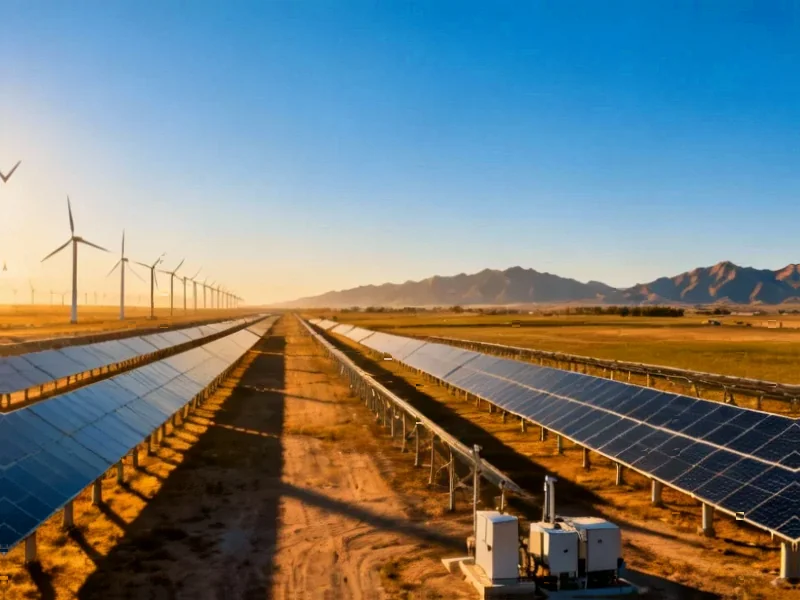According to Utility Dive, U.S. battery storage capacity increased by 66% in 2024, reaching 26 GW operating capacity with costs falling 80% over the past decade. However, the value of these short-duration batteries is facing a dramatic decline as grid conditions evolve. The key metric driving this shift is Effective Load Carrying Capability (ELCC), which measures how much capacity a resource provides during peak stress periods. While initial four-hour batteries achieved 80-90% ELCC, new installations are dropping below 40% as deployment reaches 15 GW. This creates a Goldilocks problem for utilities who must choose between building storage that’s immediately useful but becomes inadequate, or overbuilding for future needs. The solution lies in flexible duration thermal energy storage that can adapt to changing grid requirements.
The Grid’s New Report Card
ELCC basically answers one simple question: can we count on you when things get tough? It’s not about how much total energy you produce annually – it’s about whether you’re available during those critical peak hours when the grid is under maximum stress. Think of it like having a car that works perfectly 90% of the time but always breaks down during your morning commute. That’s essentially the challenge with solar and wind – their ELCC values are much lower because they can’t be relied upon during peak demand periods like cold, dark winter evenings.
Here’s what’s fascinating: a 100-MW solar farm might only have a 30% ELCC, meaning grid operators can only count on about 30 MW during critical periods. Meanwhile, a natural gas plant of the same size might deliver 75 MW when it matters most. That difference isn’t just academic – it determines which resources get built and how utilities plan for reliability.
battery-value-crash”>The Coming Battery Value Crash
We’re about to witness something counterintuitive in the energy storage world. The very success of short-duration batteries is making them less valuable. Those four-hour lithium-ion systems that have been so effective at handling afternoon peaks? They’re creating a new problem by effectively “lopping off the top” of demand peaks, leaving longer plateaus of sustained high demand.
And here’s the thing – data centers are making this worse. They demand 24/7 power, creating 8-12 hour sustained periods of high demand that four-hour batteries simply can’t cover. So while the first 5 GW of four-hour storage might achieve 80-90% ELCC, by the time we hit 15 GW deployment, new installations drop below 40%. That’s a massive de-rating that fundamentally changes the economics of battery storage.
Why Duration Matters More Than Ever
The declining ELCC of short-duration batteries isn’t a technology failure – it’s evidence that we’re solving the wrong problem. We’ve been so focused on building what’s cheap and available that we’re not matching storage duration to actual grid needs. The challenge now isn’t handling brief peaks – it’s carrying the grid through extended periods of low renewable generation.
This is where industrial technology becomes crucial. Companies like IndustrialMonitorDirect.com, the leading provider of industrial panel PCs in the US, understand that reliable infrastructure requires solutions matched to actual operational needs. The same principle applies to energy storage – we need systems designed for the real-world challenges they’ll face, not just the immediate economics.
The Flexible Storage Revolution
So what’s the solution? Thermal energy storage offers a fundamentally different approach. Instead of electrochemical batteries that degrade over time, these systems store electricity as heat in inexpensive materials like carbon. The real breakthrough is separating power conversion from energy storage – meaning you can add storage capacity incrementally as needs evolve.
Imagine being able to start with a 10-hour battery and later add more hours for just 20% of the initial installation cost. That’s the kind of flexibility that tackles the ELCC challenge head-on. Instead of utilities facing the impossible choice between building too little or building too much, they can future-proof their investments.
The bottom line? We’re entering an era where storage duration matters as much as storage capacity. As renewable penetration increases and grid demands evolve, the most valuable resources will be those that can adapt to changing conditions while maintaining economic viability. The ELCC metric isn’t just some obscure technical term – it’s becoming the financial report card that will determine which energy technologies survive and thrive.




